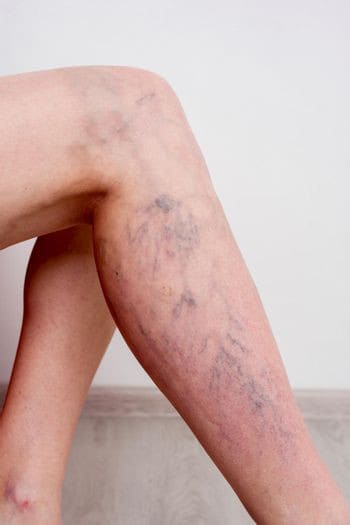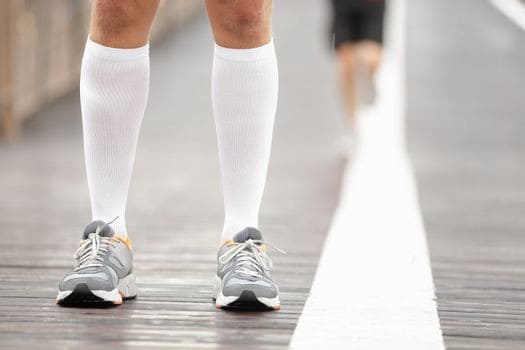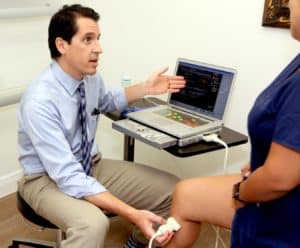You are in the right place if you know only a little about varicose veins. Varicose veins are large and twisted veins that usually appear in the legs and feet. Since they do not affect daily living, people don’t care much about treating them.
But without early and effective treatment, varicose veins may develop serious complications. These complications may include bleeding and skin ulceration. People often mistake spider veins for varicose veins, but they are not the same.
Spider veins have purple or red color and are smaller and flatter. But varicose veins are blue, bigger, and bulge out on the legs. There are other things you may not know about varicose veins. Knowing these facts is crucial as it will help reduce its risks and severity.
Here are six surprising facts you should know about varicose veins.
1. Varicose Veins Can Occur in Any Part of the Body
Twisted and dilated veins usually occur in the legs. More strain is put on the leg veins because the veins in your legs are working against gravity. If any of those veins are damaged or gets weak, blood can flow backward or have one-way valves. And will cause pooling in your veins which will result in varicose veins. But did you know it can also occur in other body parts? Varicose veins can appear on the neck and face or anywhere you have weak veins in your body.
Varicoceles are a type of varicose vein that affects men. It can occur in the left testicle and often causes discomfort. Besides exercising and changes in diet, men have no ways to prevent it from appearing. Having warm baths and putting on underwear with more significant support can help treat its symptoms. Hemorrhoids are another type of varicose vein.
2. Some Occupations Can Increase the Chances of Developing Varicose Veins

Certain occupations usually involve sitting or standing for a long time. Lecturers, teachers, flight attendants, and front desk officers fall into this category. Remember that the veins in the legs work against gravity. If you stand for a long time, the pressure in your legs increases compared to other body parts.
When you have abnormal valves, venous insufficiency, deep veins, or weak veins, you can get varicose veins. During pregnancy, some factors have a significant effect on the pressure of the veins. They are; hormonal changes, weight gain, and total body fluid. These factors can lead to a backflow of blood, resulting in varicose veins in pregnant women.
Other factors can put you at risk of varicose veins. They are:
- Age: Varicose risks increase as you age due to wear and tear on vein valves.
- Obesity: Excess weight increases the chances of varicose veins.
- Heredity: Varicose veins usually run in the family. If your family members have varicose veins, you will likely have it.
- Gender: Due to hormonal changes during menstruation, pregnancy, and menopause, varicose veins affect women more than men.
3. Certain Lifestyles Can Help Prevent Varicose Veins
Varicose veins can be hereditary. But, improvements in muscle tone and blood circulation can decrease the chances of developing varicose veins. To reduce the risks of varicose veins, doctors recommend that you:
- Do not sit or stand for a long time
- Exercise regularly
- Maintain a healthy weight
- Please stay away from tight clothes as they might alter blood flow.
- Do not wear high heels and tight hoses for a long time.

4. Not Everyone Experiences Pains from Varicose Veins
Pain is not a general symptom for people that suffer from varicose veins. But those that feel pain from varicose vein do experience the following symptoms:
- Aching
- Burning
- Numbness
- Itching
- Swelling
- Heaviness
- Fatigue
- Restless legs
Observe your varicose veins to know when you need urgent medical care. Contact a vein specialist if your veins feel tender and swell or start to bleed. Please do not ignore your varicose veins, as it could lead to dangerous blood clots, deep vein thrombosis, or further venous disease. Early detection of varicose veins can increase treatment success and possible prevent multiple medical procedures.
5. Using External Medications like Cream Doesn’t Give a Permanent Cure to Varicose Veins
Doctors will need your medical history to diagnose varicose veins precisely. They will conduct a physical exam and use duplex ultrasound to check the functional status of valves in the vein. With this, they can identify the causes of varicose veins and give appropriate treatment. Diagnosing and treating it this way will reduce the risk of disease occurrence. This will also help the doctors to determine if surgical treatment is needed or if other medical options will work.
6. Symptoms and Presenting Disease Severity Determine the Selected Treatment Option for Varicose Veins
With mild varicose veins, you can put on a compression stocking with a pressure gradient daily. It will squeeze the legs and help inefficient blood circulation in the veins of the legs.
For varicose veins of superficial veins, small, or medium sizes, you can consider sclerotherapy. During sclerotherapy, specialists will inject foam into varicose veins. The injectable will scar and close those veins. The procedure usually takes 15-30 minutes.
You can also consider endovenous ablation. A specialist will insert a flexible tube into the vein in this process. The flexible tube heats the heating apparatus by using laser energy or radiofrequency energy. The heat from the tube destroys the enlarged vein when the doctor pulls out the catheter. This process takes about 30-45 minutes.
If you have severe cases of enlarged varicose vein, you can consider having an endoscopic vein surgery. The surgical process removes affected areas in veins and repairs the remaining veins. Post-operative care usually involves the use of elastic bandages and compression stockings. Using them will support the affected areas and prevent the recurrence of the disease.
Wrapping Up
Nobody wants to have varicose veins, but they can occur for some reason. Some factors like age, occupation, obesity, pregnancy, etc., can cause varicose veins. Symptoms generally include; achiness, swelling, and heaviness on the legs or affected parts.
It is best to visit a vein specialist when you experience tenderness, swelling, or bleeding in your vein. Healthy lifestyles can help prevent varicose veins. However, if you have varicose veins, several treatment options can help you get rid of them. Contact us today for more information.


